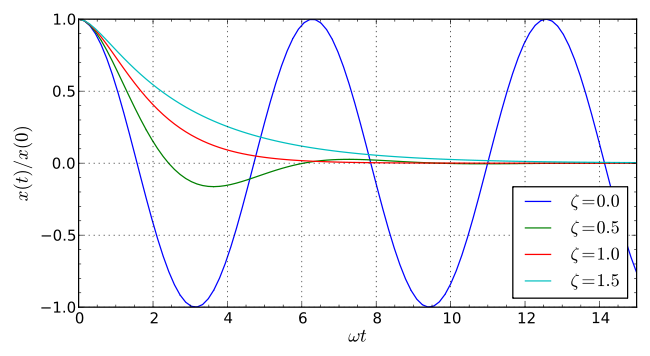Quote:
Originally Posted by TrakBch

I've noticed it less on ZCP cars.
The EDC works differently in ZCP than in the regular cars.
|
A quick search to refresh our mind about what changed in ZCP :
"the Competition Package provides further optimised [...] control of the electronic damper adjustment function EDC including a Sport mode has been precisely adjusted to the chassis modifications."
Which simply means they re-adjusted the EDC software MAPs to the 10 mm (half an inch) lower ZCP suspensions (Center of Gravity got closer to the rear drive pivot axis (= the rear axle) when accelerating/decelerating the car).It's done everytime they put EDC in a physically different car : E6x M5, M6, standard E92 M3 and finally the ZCP M3.
EDC directly affects vertical acceleration (up and down) at each of the four wheels suspensions. But 10mm lower suspension already naturally reduces the moment of forces around the rear axle even before EDC damping.
Quote:
Originally Posted by tdott

Squat down and get firmer? Those two things are contradictory.
The stance or specifically the height of the car never changes, it's only the dampening that changes.
|
You are very wrong. I'll explain below. The stance of the car (height of chassis relative to the road) changes when the car is under acceleration (unless coil springs were replaced by solid bricks). EDC is
compensating dynamically only to keep the car chassis parallel to the road, but under constant acceleration the car will assume a pitch that will be different than the static stance at constant speed or stopped.
Quote:
Originally Posted by tdott

Squatting in automotive suspension terms is when the rear of the car drops down when the car accelerates. Anti-squat describes the angle of the rear hinge-pins relative to the horizontal plane. Its purpose is to make the car squat less when accelerating.
|
Correct, but you only summarily understand this apparently. (see below)
A shock absorber is a damper that exercises a force which resists movement along it's axis proportionally to speed of movement and in either direction. On the M3 there are 3 vertical acceleration sensors (two on the front wheels suspensions, one on the rear right suspension). When the car is under constant acceleration (let's say accelerating on the highway from 40mph to 80 mph) the mass of the car moment around its center of gravity wants to squat the rear suspension down and lift the front of the car. That force is directly proportional to the car's acceleration. Assuming the EDC is set to Comfort mode, the EDC-K actuators opens the magnetic valves in the shock absorbers so that the resistance force of the shocks to movement is reduced. This result in an
critically-damped suspension that quickly squats under acceleration (not desired for performance). This gives maximum comfort as each suspension quickly responds to absorb road bumps/irregularities, but the car is not glued to the road for best adherence and traction.
Now take the same scenario of constant acceleration but set EDC to sport mode. The shock absorbers magnetic valves are more closed, the system is
over damped, it opposes more force to speed of movement of the suspensions pistons up and down their axis. That means they will settle much slower to the position where the coil spring offers equal and opposite balancing force to the squat force at that acceleration.

The above picture illustrates damping for a critically damped system (more like 'comfort' mode, damping factor = 1.0, red curve) and an overdamped system (more like sport mode, D factor > 1.0, light blue curve). The case where D factor is < 1.0 (oscillation while settling, green curve) is never by design, it only occurs if you have broken shock absorbers that started to leak. The sinusoidal curve (blue curve is with no shocks at all and no energy lost in the system).
If you switch from comfort to sport EDC the immediate change in the magnetic valves openings in the shocks result in a
larger opposing force to movements by the shocks leading to a different vertical transition to the equilibrium position of the suspension and coil springs. But the final squat angle will be independent of the EDC mode selected. The damping in upward direction (suspension rebounding) and damping downward (compression) forces of the dampers are set differently by design, the compression phase (acting on the rear suspensions in this scenario) are less damped than the rebounding phase (acting on the front suspensions in this scenario). So as the driver presses the 'sport' EDC button and floors the throttle he will feel the back of the car squatting down faster than the front of the car will move up . Overall it should feel like crouching (when under acceleration). This can be inferred from The M3 EDC control curves below :

Above is the characteristic curve representing the M3 EDC shock force [in NM] resisting movement in response to vertical speed at the wheel [in meter per second]. The top portion is reaction force to up speed movement, the bottom portion reaction force to down speed movement. The Sport EDC mode correspond to the red curve with stronger reaction force.
ALL the above refers to DYNAMIC response
under car acceleration. Not STATIC response. IF the car is not accelerating (driving at constant speed) then pressing the EDC button will
not change the pitch and center height of the chassis (and therefore cabin) relative to the road (which remains the same as the parked car stance). It will only affect how bumps and road irregularities are felt inside the cabin. Obviously the faster you drive the more those road effect will be felt (and hence EDC compensation).